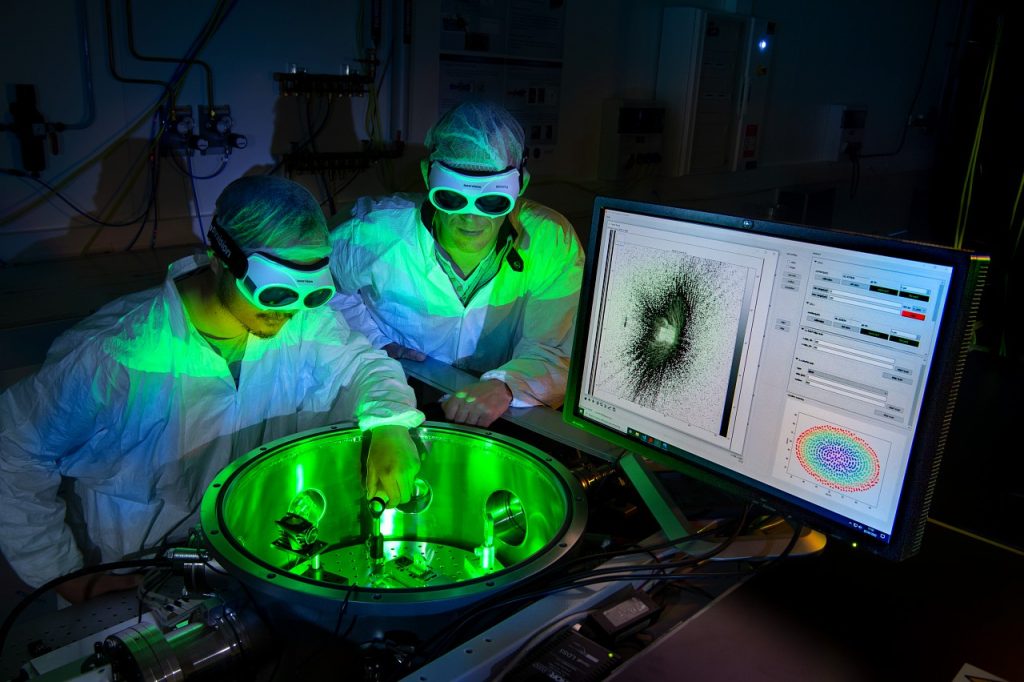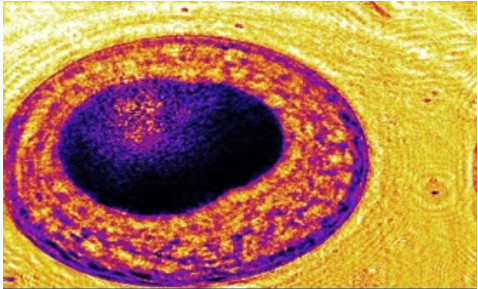Nanolite, a collaboration and joint laboratory
Nanolite is a collaboration and joint laboratory between LIDYL and Imagine Optic, launched in 2020. This platform is dedicated to the development of new optical metrology methodologies and imaging at short wavelengths, particularly in the extreme ultraviolet spectral range (EUV, between 10 and 100 nm wavelength).
We focus on developing solutions based on innovative uses of wavefront sensors and ptychography to provide metrology solutions such as at wavelength mirror inspection, focus reconstruction of focusing optics or sensor calibration.
Read more
Collaborations: Imagine Optic, Eric Mevel/Constance Valentin (CELIA, Bordeaux), Li Lu (Shenzhen Technology University)
Projects: ANR NANOLITE, Laserlab Europe
People: Xu Liu

Lensless imaging technique

Broadband coherent diffraction imaging
The generation of high-order laser harmonics has enabled the development of new radiation sources in the extreme ultraviolet. They are compact, spatially coherent and have opened the door to time-resolved studies down to the attosecond regime.
However, photon fluxes are relatively low and spread over a wide spectral range, posing a problem for diffraction imaging applications.
Read more
By digitally monochromatizing diffraction patterns, we can take advantage of the full spectral width of the source, an important step towards ultrafast nanoscale imaging on laboratory-scale sources.
Publication: Huijts et al. Nature Photonics 14, 628 (2020), DOI: 10.1038/s41566-020-0660-7
Digital in line holography for biology
The project is dedicated to the study of a new approach to microscopy based on the development of a miniaturized technology that eliminates sources of optical aberrations. Eliminating imaging optics is a perfect solution for biomedical investigation, because of the flexibility it offers and the new possibilities it opens up for in vivo analysis.
In addition, these imagers are much more compact, economical and offer wider fields of view. The rapid production of post-processed holograms considerably reduces acquisition and calculation times, enabling, for example, filming of biological processes in real time.
We have developed a compact device, the NanoXim, consisting of a laser diode and a camera, between which the sample is placed.
The NanoXim’s apparent simplicity is matched by its ability to change configuration – both experimental and algorithmic – according to the nature of the object being observed: it’s no longer the sample that has to adapt to the experiment, but vice versa. The result is a complete and versatile imaging system, capable of observing samples in 3D. The NanoXim propotype is currently being tested by Tematys at the Institut Mines Telecom.
Publication: Corman et al, Biomed. Opt. Express11, 2806 (2020), DOI : 10.1364/BOE.380193.

Phase stereo lensless X-ray imaging
In a recent work, we have shown that the concepts of stereo computer vision can be transposed to X-rays.
We demonstrated three-dimensional reconstructions at the nanoscale using a single ultrafast acquisition. In our setup, two diffraction patterns are recorded simultaneously on a single CCD camera.
Read more
After phase recovery, two stereo images are reconstructed. A 3D representation of the sample is then calculated from quantitative disparity maps, with nanometric resolution and a 20 femtosecond snapshot.
Our demonstration was also extended to X-ray phase contrast stereo imaging, where hidden 3D features of a sample were revealed.
Computed phase stereo imaging will find scientific applications in X-ray free-electron lasers, synchrotrons and laser-based sources, as well as in rapid industrial and medical 3D diagnostics.
Publications: Duarte et al, Nature Photonics 13, 449 (2019), DOI: 10.1038/s41566-019-0419-1

Ptychography
Ptychography is a lensless scanning imaging technique that combines many advantages (improved resolution, better convergence, chemical sensitivity, sample and probe reconstruction, etc.). On the NANOLITE platform, we use it to image large samples or to check the performance of our beamline.
We also apply ptychography on synchrotron facilities, with recent examples for the study of micrometric carbon fibers. An extension to metrology is currently under study.
Collaborations: Marta Fajardo, Instituto Superior Técnico (Lisbon), Philippe Zeitoun, LOA (Palaiseau), SAFRAN, Nanoscopium@Soleil.
Projets: Horizon 2020 (FET Open VOXEL), ANR NanoImagine, ANR NANOLITE



